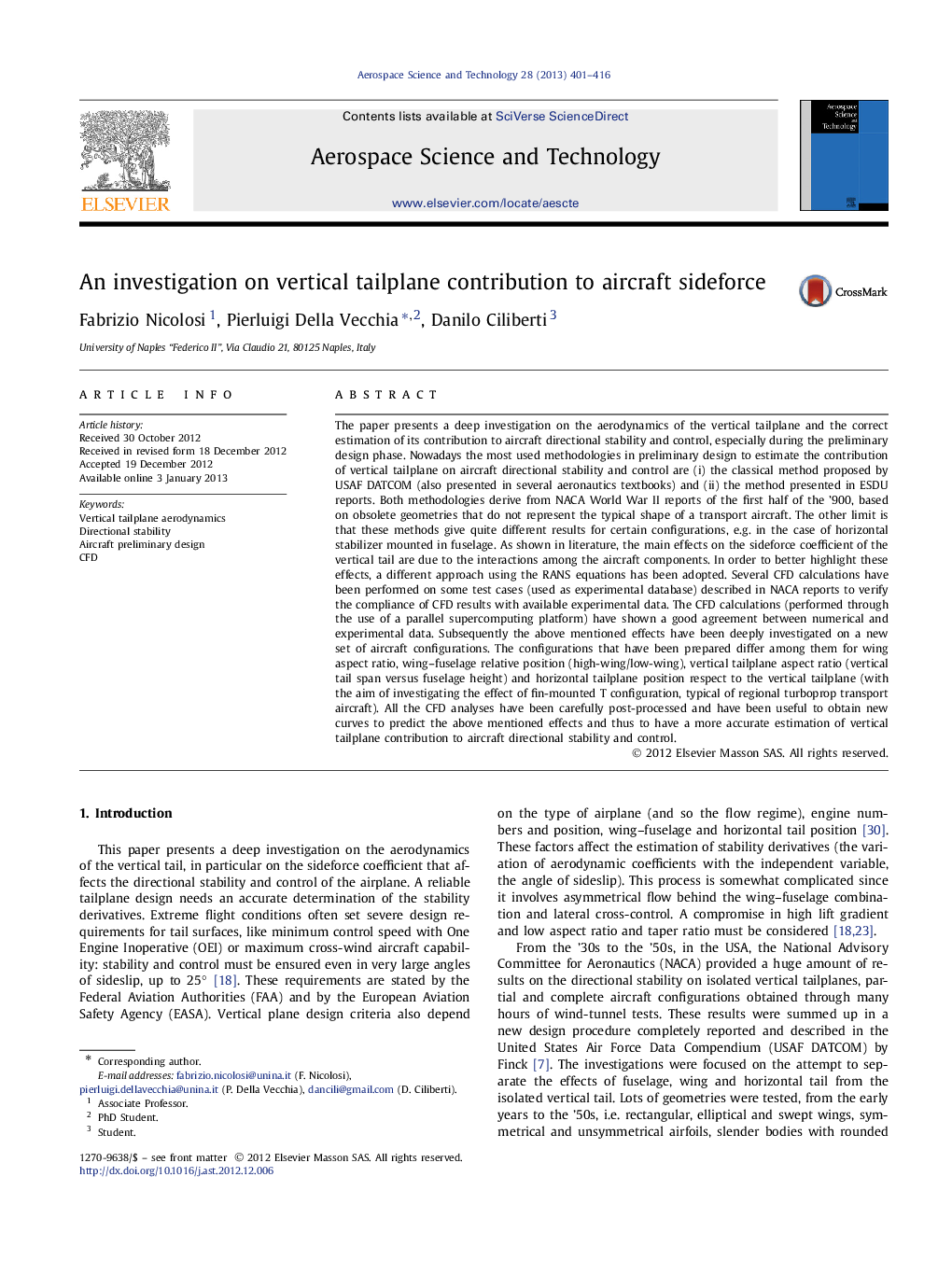| کد مقاله | کد نشریه | سال انتشار | مقاله انگلیسی | نسخه تمام متن |
|---|---|---|---|---|
| 1718293 | 1013836 | 2013 | 16 صفحه PDF | دانلود رایگان |

The paper presents a deep investigation on the aerodynamics of the vertical tailplane and the correct estimation of its contribution to aircraft directional stability and control, especially during the preliminary design phase. Nowadays the most used methodologies in preliminary design to estimate the contribution of vertical tailplane on aircraft directional stability and control are (i) the classical method proposed by USAF DATCOM (also presented in several aeronautics textbooks) and (ii) the method presented in ESDU reports. Both methodologies derive from NACA World War II reports of the first half of the ʼ900, based on obsolete geometries that do not represent the typical shape of a transport aircraft. The other limit is that these methods give quite different results for certain configurations, e.g. in the case of horizontal stabilizer mounted in fuselage. As shown in literature, the main effects on the sideforce coefficient of the vertical tail are due to the interactions among the aircraft components. In order to better highlight these effects, a different approach using the RANS equations has been adopted. Several CFD calculations have been performed on some test cases (used as experimental database) described in NACA reports to verify the compliance of CFD results with available experimental data. The CFD calculations (performed through the use of a parallel supercomputing platform) have shown a good agreement between numerical and experimental data. Subsequently the above mentioned effects have been deeply investigated on a new set of aircraft configurations. The configurations that have been prepared differ among them for wing aspect ratio, wing–fuselage relative position (high-wing/low-wing), vertical tailplane aspect ratio (vertical tail span versus fuselage height) and horizontal tailplane position respect to the vertical tailplane (with the aim of investigating the effect of fin-mounted T configuration, typical of regional turboprop transport aircraft). All the CFD analyses have been carefully post-processed and have been useful to obtain new curves to predict the above mentioned effects and thus to have a more accurate estimation of vertical tailplane contribution to aircraft directional stability and control.
Journal: Aerospace Science and Technology - Volume 28, Issue 1, July 2013, Pages 401–416